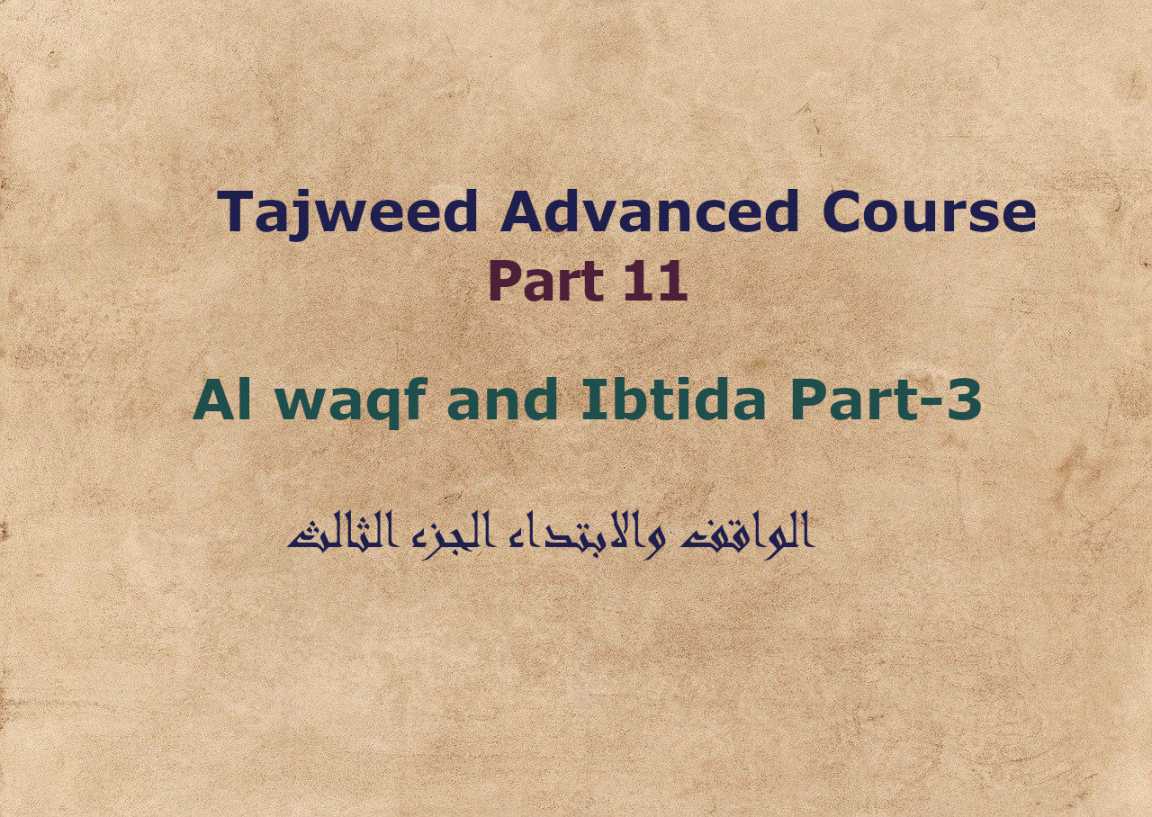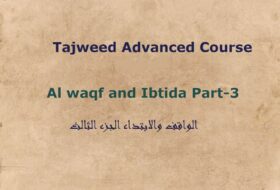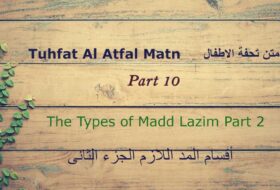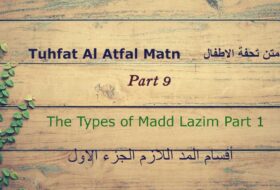Al waqf and Ibtida Part3 الوقف والأبتداء الجزء الثالث
Read: Part1 Part2 part4
The stop signs on words in the Madinah printing of the Quraan.

-There is no Waqf(stoppage) in the Quraan that is obligatory or Forbidden Islamically except that which distorts the meaning .
Notes :There is difference between stopping and cutting off .
Cut Off (Al-Qat’) القطع
Its linguistic definition : The separation to put an end to something.
Its applied definition : Cutting off the recitation and ending it.
With the cut off the reader changes to a different state outside the state of recitation ,it can be at the end of an Ayah or Surah not like stopping it can be in the middle or at the end of an Ayah .
If the reader starts reciting after cutting off he should start Al-Isti‟adhah, and if starting a surah then the Basmalah also.
Care should be given when cutting off the recitation so that the cut off is on an Ayah giving full correct meaning ,sometimes the ayah very much attached to what follows it.
The Sakt (As-sakt) السكت
Its language definition:Forbiddance.
Its applied definition:Cutting off the sound for a time less than the time of a stop, without breathing, with intention of returning to the recitation immediately.
-Its sign in the Quran (س)
-It is required (waajib) for the reader reciting the Qur’an by the Shatabiyyah way of Hafs to do Sakt in 4 places , and 2 allowed sakt in two different places in the Quran.
The “allowed” saktaat means there is more than one allowed way of reading in these places.
First “The four required places in the Quran” :
1-Surat alkahf ayah 1,2
الْحَمْدُ لِلَّهِ الَّذِي أَنزَلَ عَلَىٰ عَبْدِهِ الْكِتَابَ وَلَمْ يَجْعَل لَّهُ عِوَجًا ۜ (1) قَيِّمًا لِّيُنذِرَ بَأْسًا شَدِيدًا مِّن لَّدُنْهُ وَيُبَشِّرَ الْمُؤْمِنِينَ
-It is also allowed to stop on the word عوجا since it is the end of an ayah.
2-Surat Ya-seen ayah 52
قَالُوا يَا وَيْلَنَا مَن بَعَثَنَا مِن مَّرْقَدِنَا ۜ ۗ هَٰذَا مَا وَعَدَ الرَّحْمَٰنُ وَصَدَقَ الْمُرْسَلُونَ
-It is also allowed to stop by complete stopping .
3-Surat Al-qiyamah 27
وَقِيلَ مَنْ ۜ رَاقٍ
-Since the sakt prevents the letters from meeting, and therefore there is no idgham .
4-Surat Al-Mutafifeen 14
كَلَّا ۖ بَلْ ۜ رَانَ عَلَىٰ قُلُوبِهِم مَّا كَانُوا يَكْسِبُونَ
-Second “The two allowed places in the Qur‟an” :
إِنَّ اللَّهَ بِكُلِّ شَيْءٍ عَلِيمٌ (75)بَرَاءَةٌ مِنَ اللَّهِ وَرَسُولِهِ إِلَى الَّذِينَ عَاهَدْتُمْ مِنَ الْمُشْرِكِينَ(1)
2-Surat Al-Haqah 28,29
مَا أَغْنَىٰ عَنِّي مَالِيَهْ ۜ (28)هَلَكَ عَنِّي سُلْطَانِيَهْ (29)
Note: The complete stopping at the end of the ayah is allowed, And there is also another allowed way of reading when joining these two ayat, that is idghaam of the first sakinah letter هـ into the next voweled هـ














Comments